The document discusses different types of fuel cells including hydrogen fuel cells, microbial fuel cells (MFCs), and polymer electrolyte membrane (PEM) fuel cells. It provides details on their working principles, components, and reactions. Hydrogen fuel cells combine hydrogen and oxygen to produce electricity, heat, and water. MFCs use microorganisms and organic substrates to generate electricity. PEM fuel cells are currently leading technology for vehicles and applications, using a proton-conducting polymer membrane and platinum catalysts.
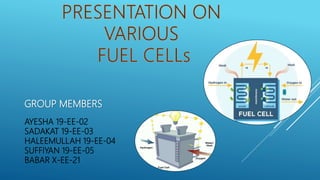



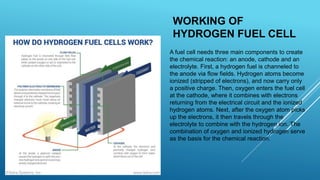
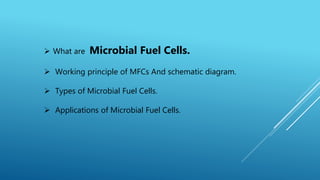




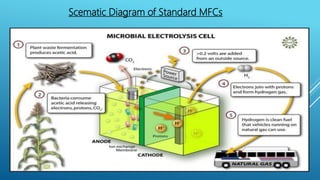
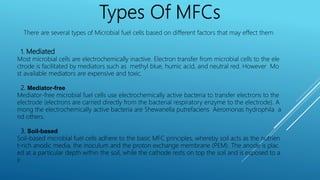






![ At 25°C, the theoretical hydrogen/oxygen fuel cell voltage is 1.23V.
In order to accurately predict the voltage, the performance, and the efficiency of the PEFC, numerous physi
cal and chemical phenomena should be taken into account. For this purpose, it is necessary to investigate t
he processes that contribute to the voltage losses and determine their contribution [1]. The cell voltage of t
he PEFC is expressed by:
“Ucell” — cell voltage
; “Uoc”—open-circuit voltage;
“ηc, ηa” —voltage losses at the cathode and anode
“ηmem” —membrane overvoltage,
“ηGDL and ηBP” —ohmic voltage drops at the gas diffusion layer (GDL) and bipolar plate (BP).
Where;](https://image.slidesharecdn.com/microbialfuelcellmodified-210320175632/85/Micro-bial-fuel-cell-modified-19-320.jpg)







